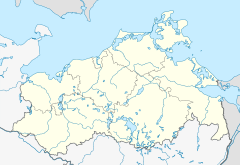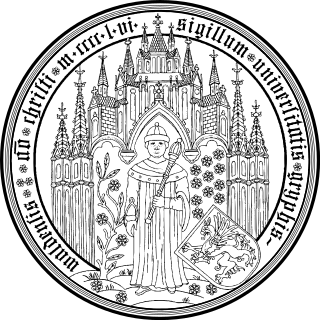
The University of Greifswald, formerly also known as "Ernst-Moritz-Arndt University of Greifswald", is a public research university located in Greifswald, Germany, in the state of Mecklenburg-Western Pomerania.

The University of Rostock is a public university located in Rostock, Mecklenburg-Vorpommern, Germany. Founded in 1419, it is the third-oldest university in Germany. It is the oldest university in continental northern Europe and the Baltic Sea area, and 8th oldest in Central Europe. It was the 5th university established in the Holy Roman Empire.
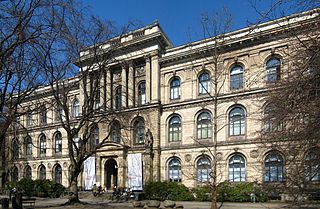
The Natural History Museum is a natural history museum located in Berlin, Germany. It exhibits a vast range of specimens from various segments of natural history and in such domain it is one of three major museums in Germany alongside Naturmuseum Senckenberg in Frankfurt and Museum Koenig in Bonn.

Johann Heinrich Friedrich Link was a German naturalist and botanist. The standard author abbreviation Link is used to indicate this person as the author when citing a botanical name.
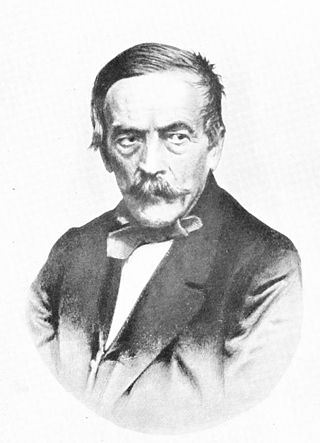
Gottlieb August Wilhelm Herrich-Schäffer was a German entomologist and physician. He was born, and died, in Regensburg. Herrich-Schäffer studied and collected particularly butterflies and moths (Lepidoptera). He was chairman of the Regensburg Botanical Society from 1861 to 1871, and was awarded an honorary citizenship of Regensburg in 1871.

The German Historical Museum, known by the acronym DHM, is a museum in Berlin, Germany devoted to German history. It describes itself as a place of "enlightenment and understanding of the shared history of Germans and Europeans". It is often viewed as one of the most important museums in Berlin and is one of the most frequented. The museum is located in the Zeughaus (armoury) on the Unter den Linden as well as in the adjacent Exhibition Hall designed by I. M. Pei.

Oluf (Olaus) Gerhard Tychsen was a German Orientalist and Hebrew scholar. He is known today as one of the founding fathers of Islamic numismatics.

Pfeilstorch is a stork that gets injured by an arrow while wintering in Africa and returns to Europe with the arrow stuck in its body. As of 2003, about 25 Pfeilstörche have been documented in Germany.

Jakob Georg Christian Adler was a Danish-German Generalsuperintendent for Holstein and Schleswig, Orientalist, Syriac language professor at the University of Copenhagen, Lutheran theologian, Oberkonsistorialrat, book writer, religious educator, coin collector and head of the Schleswig-Holsteinische Bibelgesellschaft.

The Museum Godeffroy was a museum in Hamburg, Germany, which existed from 1861 to 1885.

The Museum für Moderne Kunst, or short MMK, in Frankfurt, was founded in 1981 and opened to the public 6 June 1991. The museum was designed by the Viennese architect Hans Hollein. Because of its triangular shape, it is popularly called "piece of cake". Since 2018, Susanne Pfeffer has been director of the MMK.

The Staatliche Graphische Sammlung in Munich (München), Germany, is a large collection of drawings, prints and engravings. It contains 400,000 sheets starting from the 15th century from various artists around the world. Along with Kupferstichkabinett Berlin and Kupferstichkabinett Dresden, it is the most important collection of its kind in Germany. It is owned by the government of Bavaria and located within the Kunstareal, a museum quarter in the city centre of Munich.

The Botanical Museum Greifswald is a scientific collection at the department of botany of the University of Greifswald. It was founded around 1850 by Julius Münter and is the largest botanical collection in the state of Mecklenburg-Vorpommern.
Museen am Meer is an association of eight museums in the city centre of Kiel, Schleswig-Holstein, Germany, on the edge of Kiel Fjord. The consortium was founded in 2010.

Rostock Zoo is a zoo in the city of Rostock, founded in 1899. It covers 56 hectares and with 4,500 animals from 320 species, Rostock Zoo is the largest zoo on the German east coast. Rostock Zoo is studbook keeper of Polar bears within the European Endangered Species Programme. The director of Rostock Zoo is Udo Nagel.
Maximilian Christian Gustav Carl Braun was a German anatomist and zoologist, who specialized in the field of parasitology.

The Natural History Museum in Bielefeld is a natural history museum in the city of Bielefeld in North Rhine-Westphalia, Germany. Since 2003, it was given the additional name namu, which stands for the German words Natur (nature), Mensch (man), and Umwelt (environment). The exhibitions take place in the Spiegelshof, a historical building from the 14th century.
Richard Sedlmaier was a German art historian.
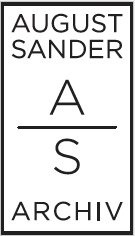
The August Sander Archive comprises the estate of the German photographer August Sander and is part of the collection of Die Photographische Sammlung/SK Stiftung Kultur, in Cologne. The photographic work has been kept there since 1993 with a large number of original photographs, negatives and documents.

